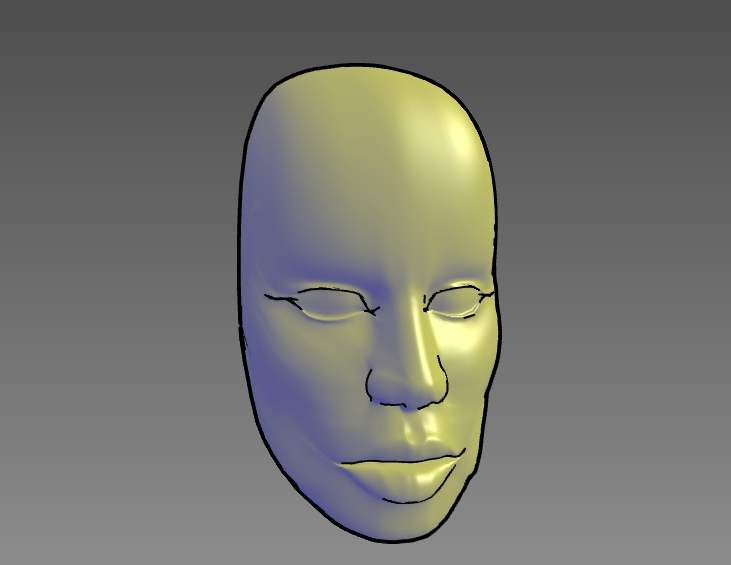
 |

 |
Shading is rendered using one of three modes. The first two are the diffuse and metallic shading models presented by Gooch et al. [6]. In its simplest form the diffuse cool to warm shading model interpolates from a cool (blue-green) to a warm (yellow-orange) color based on the surface normal. This cool-to-warm diffuse shading is shown in Figure 4a. The third method is an adaptation of this cool to warm shading, simulating the more dramatic shading effects sometimes used by artists. Figure 4b illustrates the effect achie ved when the reflected light from the left of the object produces a back-splash of light opposite the direct lighting source. This is accomplished by modifying the model of [6] with a simple multiplier:

where alpha and p are free parameters which, for this image, are set to 0.76 and 0.78, respectively.